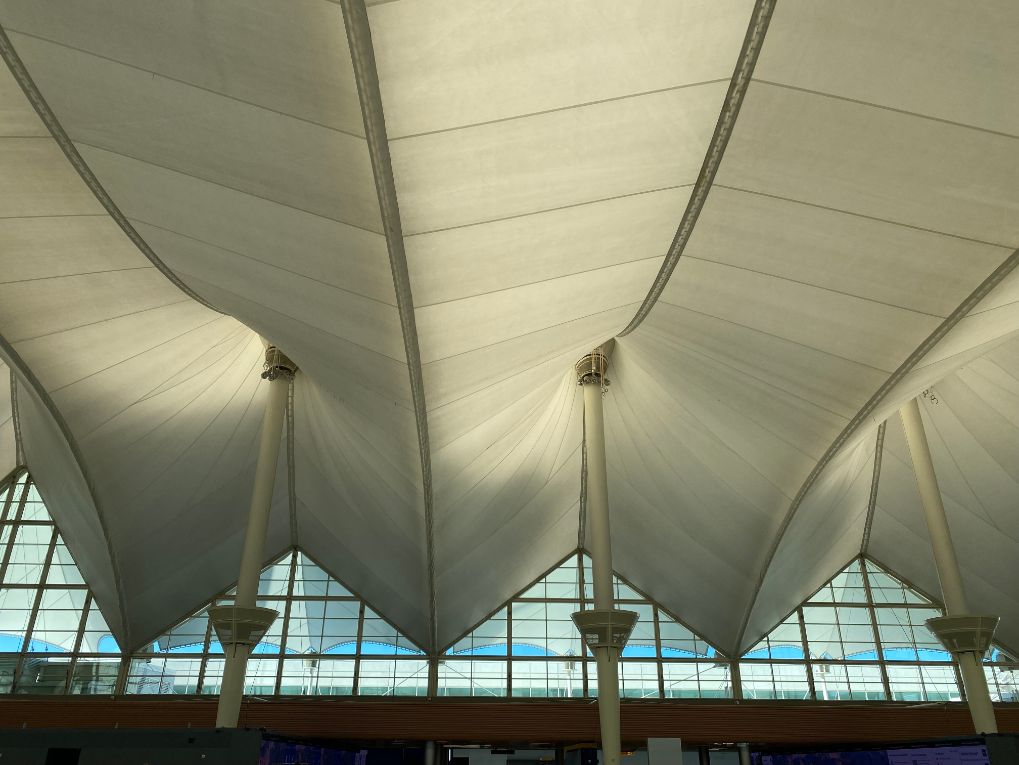When it comes to roofing materials, fabric might not be the first thing that comes to mind. However, in recent years, fabric roofing has gained popularity as an innovative and versatile solution for both residential and commercial properties. This unique roofing option combines aesthetics, durability, and sustainability, offering a range of benefits that make it worth considering.
What is Fabric Roofing?
Fabric roofing, also known as tensile membrane roofing is a type of fabric roofing systems that utilizes high-strength, flexible fabrics as a primary roofing material. These fabrics are typically made of materials like PVC, PTFE (polytetrafluoroethylene) or ETFE (ethylene tetrafluoroethylene) and are stretched taut over a structural framework to create a membrane-like covering.
Advantages of Fabric Roofing
Versatility and Design Freedom: Fabric roofing offers unparalleled design freedom, allowing architects and designers to create unique and visually stunning structures. The flexible nature of the fabric enables the creation of complex shapes, curves and domes that would be challenging with traditional roofing materials. It opens up endless possibilities for creative expression.
Natural Light Transmission: Fabric roofs can be translucent or transparent, which allows natural light to filter through, creating a bright and inviting indoor environment. This not only reduces the need for artificial lighting during the day but also creates a pleasant ambiance, positively impacting the overall well-being of occupants.
Lightweight and Cost-effective: Fabric roofing systems are considerably lighter than traditional materials, resulting in reduced structural requirements and costs. The reduced weight also means easier installation and less strain on the building’s foundation. Moreover, fabric roofing materials tend to be more affordable than their counterparts, making them a cost-effective option for various projects.
Energy Efficiency: The translucent properties of fabric roofs enable natural daylighting, which can significantly reduce the need for electric lighting during the day, resulting in energy savings. Additionally, some fabric materials can offer excellent insulation properties, reducing heating and cooling costs by minimizing heat transfer.
Durability and Weather Resistance: High-quality fabric roofing materials are engineered to withstand harsh weather conditions, including heavy rain, wind, snow, and even UV radiation. They are often treated with protective coatings that enhance their resistance to fire, mildew and staining. This durability ensures that fabric roofs maintain their functionality and appearance over time.
Applications of Fabric Roofing
Fabric roofing finds applications in various sectors, including:
Commercial Structures: Fabric roofs are frequently used in commercial settings such as stadiums, convention centers, shopping malls, and airports. Their striking aesthetics and ability to cover large spans make them an ideal choice for these expansive spaces.
Residential Buildings: Fabric roofing can be utilized in residential construction, adding a touch of modernity and uniqueness to homes. Whether used in patio covers, carports, or pergolas, fabric roofs offer an elegant and functional solution.
Recreational Facilities: Fabric structures are commonly employed in sports facilities, amphitheaters, and outdoor event spaces. They provide weather protection while maintaining an open and airy atmosphere.
For the best roofing material advice, explore home remodelpedia, From durability to aesthetics, find guidance to enhance your home’s protection and curb appeal.
